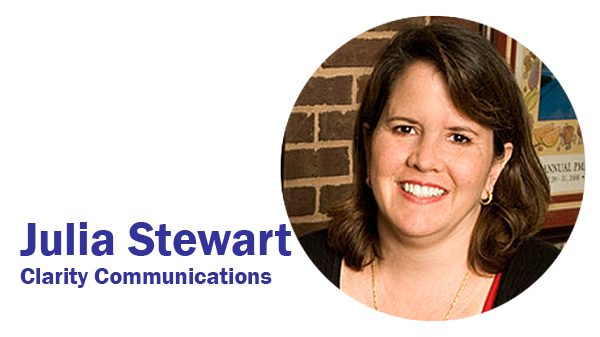A few weeks back, I hunkered down to experience my first hurricane at our New Orleans home. I stocked up on groceries and batteries, battened down the hatches outside, charged all my devices and then settled in in front of the TV to binge watch the news about Barry.
For a few days running, the local news channels dutifully aired city press conferences. The mayor kicked off each conference, followed by a line of officials parading to the lectern and the microphone one after another, representing police, fire, EMS, homeland security and emergency preparedness, and related offices.
As a communicator, what struck me was what came after Mayor Cantrell’s stern “take this storm seriously” warnings. Most of the speakers used jargon that I didn’t understand, for example talking about the various “assets” they’d “deployed”. They talked about a whole lot of whats, and not much about why it mattered to New Orleanians. They congratulated each other on the great jobs they were doing.
In other words, they talked to each other – not to New Orleans. As I saw it, they missed an opportunity to tell their constituents in plainspeak what they were doing for the city and its residents. In the process, they missed the chance to sell us on them. (To be clear, a few of the speakers did address us locals. I learned a lot about the power of even shallow flood waters, so from now on I will always turn around, don’t drown.)
Do you speak “customer” in your communications? Or are you talking to yourself and your industry colleagues?
If you speak “customer”, then you’ve gone through the thoughtful process of identifying your target customer audience(s). You’ve learned what they care about, and crafted messaging that speaks to them about the value your products or services can add to their lives. You then deploy that messaging in various ways through all your communications channels. This attention to “customer” is how you get – and keep – your audiences’ attention, earning their trust and loyalty. And if you’re also consistently delivering a great product or service, then you can even turn those customers into evangelists.
For example: One of the grocery store purchases I made on my pre-storm run was a melon. This wasn’t the usual anonymous melon – when this melon got its chance at the lectern with the microphone, it loudly and clearly talked to me the consumer. Each melon was packaged in a mesh bag with a full-color label. The front label told me the variety (Sugar Kiss), its flavor profile and story, and promised me a very different melon-eating experience. The back of the label had a picture and personal message from the packer (Savor Fresh Farms), giving me a face behind the food I was about to eat. When I called up their mobile-friendly website, the first thing that greeted me is a picture of a woman in a field, holding up a melon – either celebrating it or inspecting it carefully, either way I’m happy. (Bonus, the site tells me the mesh bag is 100% recyclable.) (Double-bonus: Had I found them online first, their website listed the retailers stocking their melons.)
Best of all, the melon tasted ah-mazing! The second and third ones I’ve eaten since then have been equally good. This brand holds up to its promise. In case you can’t tell, I’m now a huge fan and evangelist for this brand. (No, they are not a client. Though this is exactly the kind of company with whom I’d like to work.)
This communications discipline doesn’t just work for melons – it can work for apples to zucchini, and for consultancies, trade associations, coalitions, even emergency responders. The key: Think like your customers, and what meets their needs – that will get their attention.



